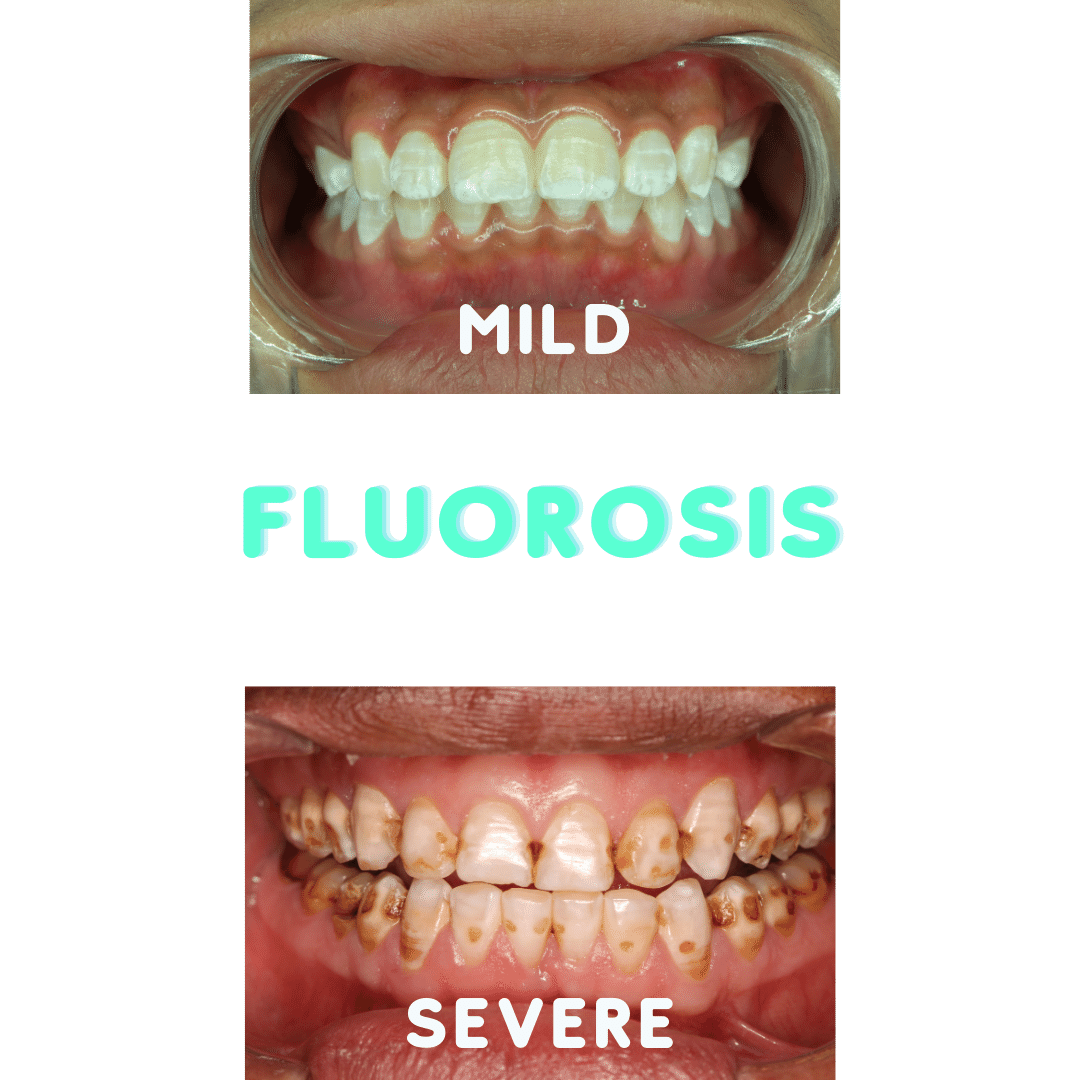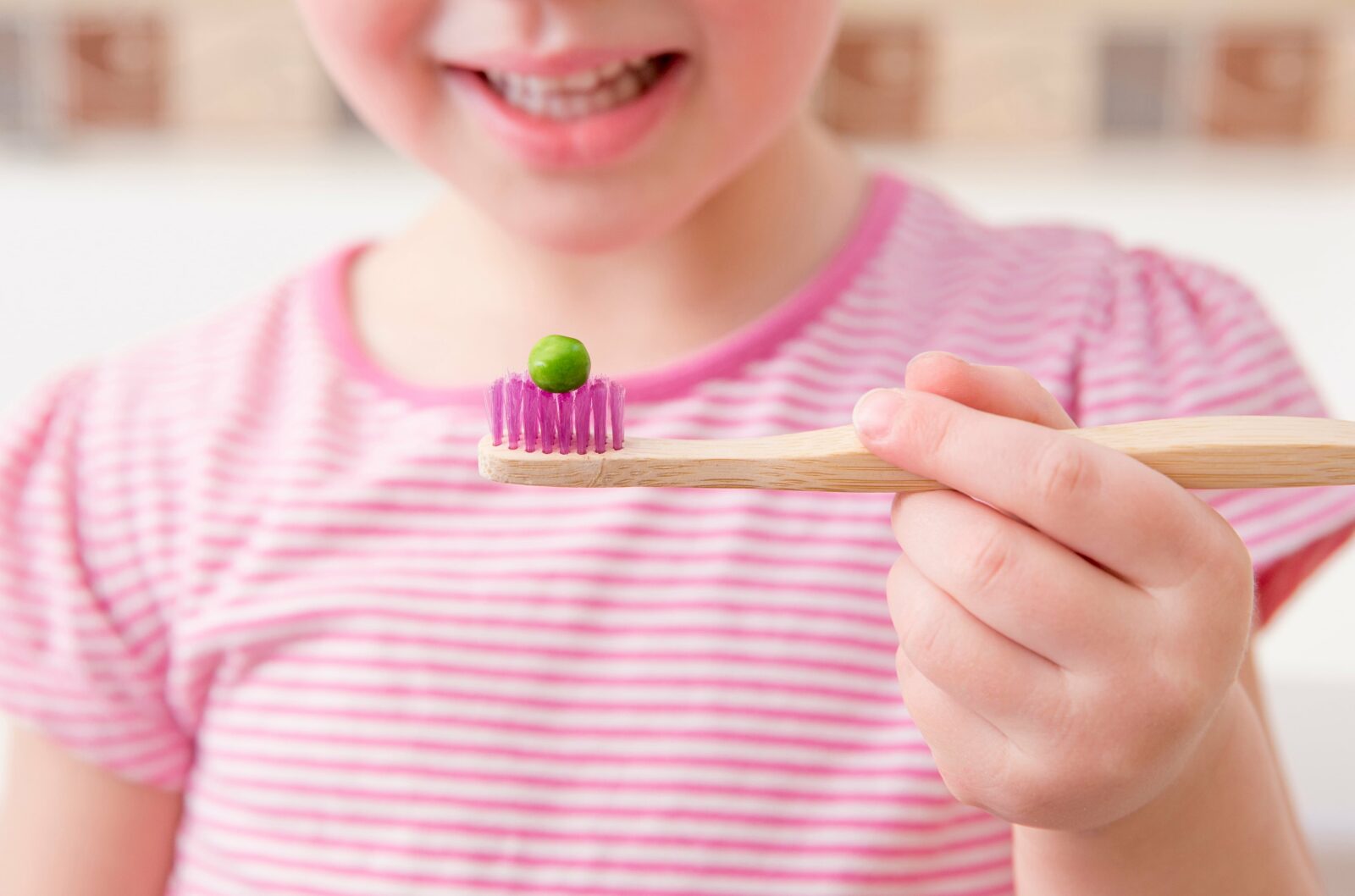Fluoride is a mineral that has been safely used in dentistry to strengthen tooth enamel and prevent tooth decay. It is found in dental products such as toothpastes and mouthwashes, as well as being used as a supplement to drinking water and as a varnish after teeth cleaning. Not only does fluoride strengthen teeth, but it prevents premature tooth loss, minimizes bacterial growth, and decreases the need for invasive dental treatments. Still, as Aesop said, “It is possible to have too much of a good thing”.

With fluoride being available in so many different sources, there is a chance that your child could get too much fluoride. When this happens, they can develop a cosmetic condition known as fluorosis. While this may sound scary, fluorosis is not a disease nor does it affect the function of your child’s teeth. Instead fluorosis causes white lines, streaks, or a lace pattern to form on the surface of the teeth.
Depending on the severity of fluorosis, it can present in different ways. Fluorosis can be characterized as mild, moderate, or severe. The vast majority of fluorosis cases are mild, some may be moderate, and very few are severe. Mild fluorosis is characterized by patterns on the bottoms of the teeth, moderate fluorosis extends over the entire tooth, and severe fluorosis can cause enamel pitting and brown spots.
Fluorosis occurs when too much fluoride is given while the teeth are developing in the gums. This means two things. First, it means that once your child’s teeth have erupted, they can no longer be affected by fluorosis. Since the permanent teeth are done developing around the age of 8, this also means that fluorosis only occurs in children under the age of 8.
In order to prevent your child from developing fluorosis before they turn 8, it is important to know how to minimize their exposure. Here are some ways to prevent fluorosis:
Breastfeed
The American Academy of Pediatrics recommends breastfeeding exclusively until your child is six months old, then adding foods while continuing to breastfeed until your child is one year old. The exception, of course, is when breastfeeding has been proven to be harmful to mother or child. While breastfeeding has a number of benefits, one of these benefits is it decreases your child’s exposure to fluoride. This is because infant formulas can contain low concentrations of fluoride. Additionally, powdered or concentrated formulas require the addition of drinking water, which can increase the concentration of fluoride when the drinking water is already supplemented with fluoride. In cases where formula is primarily used, it is recommended to speak with your child’s pediatrician on what type of formula would be best for your child. Generally speaking, ready-to-feed formulas contain very little fluoride and are usually recommended.
Check Your Primary Source of Drinking Water
Many communities supplement fluoride in their drinking water, while bottled water tends to contain little to no fluoride. In the case that your drinking water is fluoridated, then your child will not need additional fluoride supplements since they are likely getting enough from drinking water. To determine if your water contains fluoride, see the CDC’s “My Water’s Fluoride” page. You may also need to determine the concentration of fluoride being used to determine whether additional sources of fluoride are beneficial or detrimental. In the case that fluoride is not supplied by the drinking water, you will want to speak with your child’s pediatrician about an appropriate fluoride supplement to prevent decay without causing fluorosis.
Regulate Toothpaste Use

By far, one of the most common causes of fluorosis is regularly swallowing toothpaste. For this reason, it is extremely important to regulate how much toothpaste your child uses and to supervise them while brushing their teeth. From infancy to the age of 3, your child should only use a tiny amount of toothpaste that is no larger than a grain of rice. From the ages of 3-8, you can increase this amount to the size of a pea. You will also need to encourage your child to spit out the toothpaste after brushing and discourage swallowing it.
Avoid Mouthwash
While mouthwash can have benefits, it is not recommended for children under the age of 6. This is because young children under the age of 6 haven’t fully developed the swallowing reflex and are more likely to swallow large amounts of mouthwash.
Schedule Regular Dental Visits
Starting at six months of age, your child should visit their dentist every six months. This allows your child’s dentist to closely monitor their oral health and detect possible signs of fluorosis early on. Your child’s dentist can also provide you with additional information on how to prevent fluorosis.
In most cases, following the aforementioned guidelines are adequate for preventing fluorosis. In the case that your child does develop fluorosis, most cases of fluorosis are so mild that they are barely visible. Nevertheless, fluorosis can be effectively treated with cosmetic dental treatments if needed.






